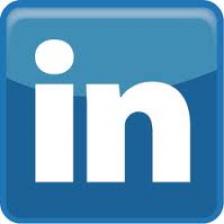LinkedIn Lately? No? Find Out What You’re Missing
LinkedIn is useful for much more than just job searching. The Public Speaker explains how LinkedIn can help you build your network and engage customers.
Lisa B. Marshall
Listen
LinkedIn Lately? No? Find Out What You’re Missing
“It looks like my old boss just got laid off!” a friend told me over the weekend. I asked how he found out. “She just joined LinkedIn. Why else would she do that?” My friend is partly right – lots of people wait to join LinkedIn until they’re job hunting. But there are plenty of other good reasons to sign up now..
A little research tells us who’s on LinkedIn and who’s not. According to Social Media Today, 20% of adult online users are on LinkedIn. Of those, 54% are men. A site called Boolean Black Belt shows a much greater discrepancy – 65% men to 35% women. According to their data, this is a much wider gap than what we saw in 2010 and 2011. I talked about this more in my previous podcast episodes, The Social Media Gender Gap (Part 1) and Part 2.
The majority of LinkedIn users are middle-aged. We might extrapolate that to say they’re probably established in their career. In general, younger people and those entering the job market aren’t taking advantage of what LinkedIn has to offer.
Why Should You Be on LinkedIn?

-
75% said they liked being able to research other companies
-
68% said they liked reconnecting with past associates
-
45% said they liked creating face-to-face networking opportunities
And by the way, only 1 in 10 users sign up for the paid features. A greta majority simply use the free version. Let’s take a closer look at how people are using LinkedIn:
Tip #1: How to Use LinkedIn for Job Searching
LinkedIn is a great tool for job hunting. There are companies and recruiters perusing LinkedIn everyday looking for candidates. Some use automated tools and search by keywords to narrow down candidate lists. Others look based on connections or titles. You don’t have to have an long resume to find a job through LinkedIn, but you do have to know how to help recruiters find you.
See also: What is Proper LinkedIn Etiquette?
Learn how to create a profile that will attract both automated and personal recruiters. Research which keywords will get you noticed in your field and sprinkle them appropriately throughout your profile (try using Google’s Contextual Targeting Tool). The more opitimized your profile, the more it is likely you’ll be found on search. However, ultimately, it’s a human who does the hiring, so be sure to also use the new media rich features to include samples of your work or videos of yourself talking about your work. Of course, you’ll also want to join professional LinkedIn groups in your areas of expertise.
Tip #2: Use LinkedIn for Networking

When it comes to making connections, I believe in both quality and quantity. I know some would disagree with me, however, I think it is important to have a broad base of connections to help you see deeper into the overall LInkedIn database. This means I have connected with several of the “super” connectors who have thousands of first level connections. (Keep in mind that you can only see information for your first and second level connections).
The focus should be on building relationships with prospects and customers. Make it clear that you’re here to provide value, not just to sell to them.
However, I also beleive that it is only possible to develop a small number of high quality connections. So it’s important to establish both types of connections within your LinkedIn network. If you aren’t currently using a CRM to manage your contacts, LinkedIn provides a minimal tool to tag and track your networking interactions.
When sending a connection request, I always include a personal message that lets the person know why I’m interested in connecting with them. For example:
“Hi, My name’s Lisa Marshall, and I’ve read all of your books on networking. I talk about this topic quite a bit on my podcasts too. I’d love to invite you to share some tips on my podcasts Smart Talk and The Public Speaker.”
If I get a generic connection request, I respond by thanking the sender and asking them to tell me a little about how they found me. It’s a my to continue the conversation and start slowing building a deeper relationship. In my experience, these little interactions eventually lead to great results.
Tip #3: Use LinkedIn for Inbound Communication

Viveka says the focus should be on building relationships with prospects and customers. Make it clear that you’re here to provide value, not just to sell to them. For example, if you’re a professional organizer, you can offer quick tips for organizing a room or saving time. You can post short videos with suggestions for how to organize your closet.
My friend, Wafik El-Diery is a world renowned cancer researcher. His profile includes several videos talking about his research and why it’s so critical. It also include many of his published articles. His profile is an excellent example of both providing information and adding value.
I hope I’ve shown you that LinkedIn is a valuable resource in your professional career. Don’t wait till you need a new job to join. Use it now to build your network, communicate with customers, and learn about your industry. Then, when it’s time to change careers, you’ll already have the tools and connections you need to move forward.
This is Lisa B. Marshall, Helping you maximize sales, manage perceptions, and enhance leadership through keynotes, workshops, books, and online courses. Passionate about communication; your success is my business.
Do you struggle with difficult conversations? Do you procrastinate when it comes to delivering feedback? Do you know how to effectively persuade and influence others? Learn this and more in my book Smart Talk. Get your personally signed copy today!
Resources
My interview with Viveka VanRosen (aka @linkedinexpert)
Social Media Today infographic

